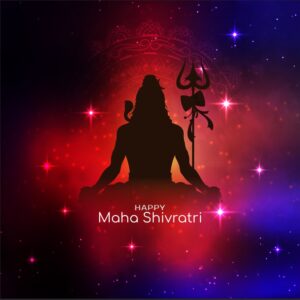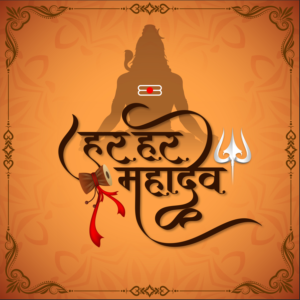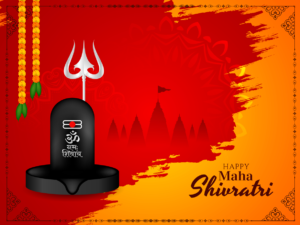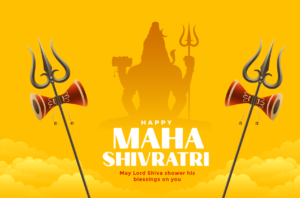What is Maha Shivratri?
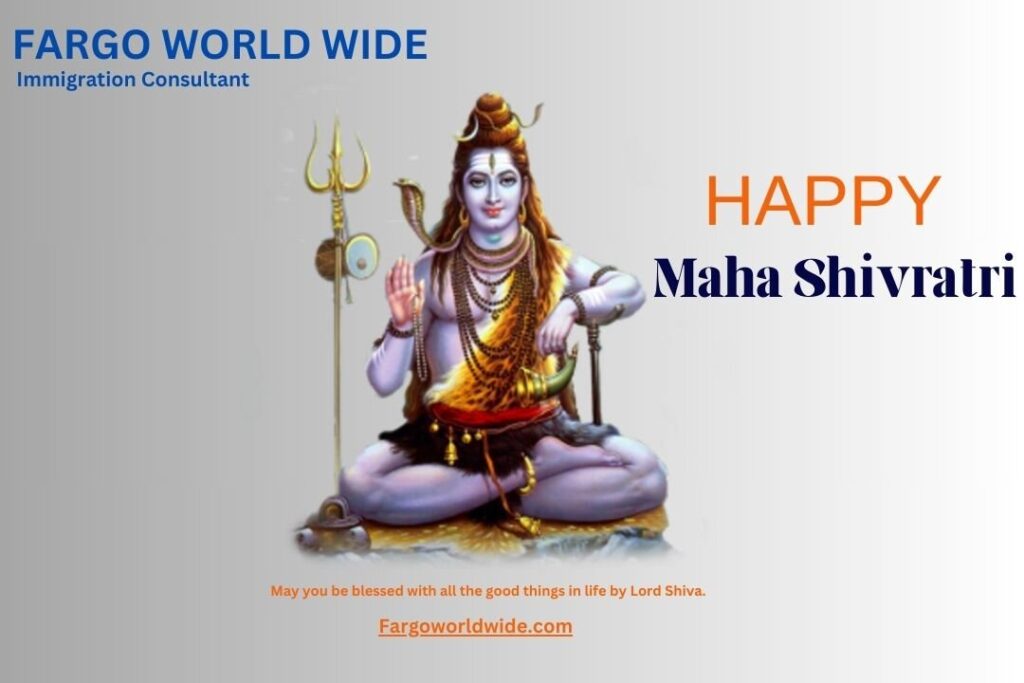
When is Maha Shivratri Celebrate ?
Maha Shivratri, also known as the “Great Night of Lord Shiva,” is a significant Hindu Festival Celebrated with great fervor and devotion in India. This auspicious occasion holds immense spiritual and cultural importance in India, marking the union of Lord Shiva and Goddess Parvati and symbolizing the awakening of divine consciousness.
Observed on the 14th night of the dark fortnight of the month of Phalgun Mash according to the Hindu lunar calendar, Maha Shivratri is a time when devotees express their reverence for Lord Shiva through various rituals and customs. From fasting, meditating, and offering prayers to visiting Shiva Temples, this festival provides an opportunity for spiritual introspection and seeking blessings from the divine.
Key Takeaways:
- Maha Shivratri is a revered Hindu festival Celebrated in India.
- It signifies the union of Lord Shiva and Goddess Parvati.
- The festival holds immense spiritual and cultural significance.
- Devotees observe fasting, meditate, and offer prayers on Mahashivratri.
- Visiting Shiva temples and performing rituals are common practices during this time.
Mythological Significance of Mahashivratri
A Story Behind Maha Shivratri Celebration
Mahashivratri, one of the most significant festivals in India, is steeped in rich mythology and legends that highlight the divine manifestations of Lord Shiva. This auspicious occasion celebrates the marriage of Lord Shiva with Goddess Gori(Parvati), symbolizing the union of male and female energies, creation and destruction, and the ultimate balance in the universe.
According to Hindu mythology, during the churning of the cosmic ocean, poison emerged from the depths, threatening to destroy all life. To save the world, Lord Shiva consumed this poison, which turned his throat blue, giving him the name “Neelkanth” or “The Blue-Throated One.” Mahashivratri commemorates this event and signifies Lord Shiva‘s act of sacrificing for the greater good.
“Mahashivratri is more than a festival; it is a time to reflect on the divine presence of Lord Shiva and seek spiritual transformation.”
— Swami Vivekananda
The mythology surrounding Maha Shivratri serves as a reminder of the eternal cycle of creation, preservation, and dissolution, with Lord Shiva as the embodiment of supreme consciousness and divine power. It imparts profound spiritual teachings, urging individuals to cultivate devotion, inner peace, and enlightenment.
The Marriage of Lord Shiva and Goddess Parvati
One popular narrative associated with Maha Shivratri revolves around the celestial wedding of Lord Shiva and Goddess Parvati. It is believed that Goddess Parvati, also known as Uma, performed intense penance to win Lord Shiva’s heart and seek his embrace as her husband.
Goddess Parvati’s unwavering dedication and devotion touched Lord Shiva‘s heart, and he agreed to marry her. This divine union represents the union of pure consciousness (Shiva) and divine energy (Shakti) and is considered the foundation of all creation.
Rituals and Traditions of Mahashivratri
What To Do on Maha Shivratri?
Maha Shivratri, the auspicious day dedicated to Lord Shiva, is celebrated with great fervor and devotion in India. This significant festival is marked by various customs and rituals that hold deep spiritual meaning and invoke a sense of reverence among devotees. From fasting to offering prayers and performing special ceremonies, Maha Shivratri is observed with utmost devotion and enthusiasm.
Fasting
One of the most common practices during Maha Shivratri is fasting, where devotees refrain from consuming food throughout the day. This fast is believed to cleanse the body and mind, creating a conducive environment for spiritual growth. Some people observe a strict waterless fast, while others consume fruit and milk as a form of sustenance.
Offering Prayers
Prayers form an integral part of Maha Shivratri celebrations. Devotees visit Shiva temples early in the morning and offer prayers to Lord Shiva while chanting sacred mantras and hymns. The atmosphere is filled with devotion as people express their love and gratitude to the divine through prayers, seeking blessings for themselves and their loved ones.
Special Ceremonies
One of the significant ceremonies performed during Maha Shivratri is Rudra Abhishekam. In this ritual, the Shiva Linga is bathed with water, milk, honey, and other sacred substances, while chanting powerful mantras. This is believed to purify the soul and bestow divine blessings. Additionally, devotees also light lamps, burn incense, and offer flowers to Lord Shiva, creating a divine ambiance.
Visiting Temples
Devotees throng to Shiva Temples on Maha Shivratri to seek the blessings of Lord Shiva. The temples are adorned with beautiful decorations and the sound of devotional songs fills the air. People often stay awake all night, engaging in prayers, chanting mantras, and listening to religious discourses, immersing themselves in the divine presence of Lord Shiva.
Shivratri Quotes
“The Shiva Linga is not just a physical object of worship; it is a profound symbol that encapsulates the entire universe and the spiritual journey of an individual.” – Spiritual Guru
During Maha Shivratri, devotees offer milk, flowers, and Bilva leaves to the Shiva Linga, signifying devotion, purity, and surrender to the divine. The pouring of water and milk on the Linga represents the showering of blessings, while the lighting of lamps signifies the eradication of darkness and the awakening of spiritual awareness.
The symbolism of the Shiva Linga also extends to the yoni, the base upon which it rests, representing the universal feminine energy. It signifies the balance between the masculine and feminine principles, reminding us of the importance of embracing both aspects within ourselves and the world.
Furthermore, the Shiva Linga reminds us of the impermanence of life and the transient nature of material existence. It teaches us to look beyond the physical form and connect with the eternal consciousness that lies within each of us.
Shivratri Quotes
“The Shiva Linga is a reminder that our true essence is beyond the limitations of the physical body and the material world.” – Spiritual Teacher
Throughout Maha Shivratri, devotees immerse themselves in meditation, chanting mantras, and offering heartfelt prayers, aiming to transcend the mundane and unite with the divine consciousness symbolized by the Shiva Linga. This sacred practice reinforces the belief that through devotion and self-realization, one can attain spiritual liberation.
The symbolism of the Shiva Linga on Maha Shivratri serves as a beautiful reminder of the profound relationship between Lord Shiva, Goddess Shakti, and the eternal journey of the soul towards unity and spiritual awakening.
Cultural Significance of Mahashivratri in India
Essence of Maha Shivratri
Maha Shivratri holds immense cultural significance in India, transcending geographical boundaries and connecting people from diverse backgrounds. The festival showcases the rich heritage and deep-rooted Traditions of the country, making it a significant part of the Indian cultural fabric.
The Influence on Art, Music, and Dance
Maha Shivratri has played a pivotal role in shaping the artistic landscape of India. Artists, musicians, and dancers have drawn inspiration from the divine essence of Lord Shiva and poured their creativity into various art forms. From classical dance performances like Bharatanatyam and Kathak to melodious renditions of Shiva bhajans and classical music concerts, the festival has become a platform for artists to express their devotion and showcase their talent.
The celebration of Maha Shivratri brings forth a sense of spirituality and artistic expression, creating an atmosphere of reverence and creativity all around. – Sangeeta Sharma, Classical dancer
Regional Traditions and Customs
India is a land of diverse cultures and Traditions, and Maha Shivratri is celebrated with unique customs and practices in different regions of the country. In the northern states of India, devotees visit Shiva temples, while in southern India, the festival is marked by grand processions and elaborate rituals. In states like Gujarat and Maharashtra, where folk Traditions flourish, people perform the ancient dance form of Garba and participate in the traditional Dahi Handi Ceremony.
Across the globe, Maha Shivratri serves as a unifying force, bringing together people from diverse backgrounds to celebrate spirituality, devotion, and the eternal grace of Lord Shiva.
Maha Shivratri photos
Maha Shivratri is a special occasion for Hindu across the globe. They use lord Shiva and lord Parvati photos for Puja and prayers in India.

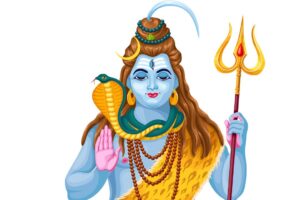
Conclusion
In conclusion, Maha Shivratri is a festival of immense Significance in India, celebrated with great fervor and devotion. This auspicious occasion serves as a reminder of the deep spiritual connection between Lord Shiva and his devotees, and it holds a special place in the hearts of millions across the country.
Maha Shivratri serves as a powerful catalyst for spiritual awakening, as devotees engage in various rituals and traditions to seek blessings and express their reverence for Lord Shiva. Through fasting, prayer, and visiting temples, individuals attain a sense of inner peace and connect with the divine energy represented by Lord Shiva.
FAQ
Why is Maha Shivratri Celebrated?
Mahashivratri is celebrated to honor Lord Shiva and signifies spiritual awakening. It is a widely revered festival in India that holds great cultural and mythological significance.
What Is The Mythological Significance of Mahashivratri?
Mahashivratri has several mythological significances, including the marriage of Lord Shiva and Goddess Parvati, the Neelkanth episode, and the churning of the cosmic ocean, which resulted in the emergence of the divine nectar.
What Are The Rituals And Traditions of Mahashivratri?
Mahashivratri is observed through various customs and rituals, such as fasting, offering prayers, visiting temples, and performing special ceremonies like Rudra Abhishekam, where sacred items like milk, honey, and water are poured on the Shiva Linga.
What Is The Symbolism of Shiva Linga on Mahashivratri?
The Shiva Linga holds deep symbolic significance during Mahashivratri. It represents the unity of Lord Shiva and Goddess Shakti, as well as the cosmic creation and destruction. Devotees worship the Linga as the divine form of Lord Shiva.
What Is The Date of Maha Shivratri 2024?
Maha Shivratri 2024 date is Fri, 8 Mar, 2024, 9:57 pm – Sat, 9 Mar, 2024, 6:17 pm.

